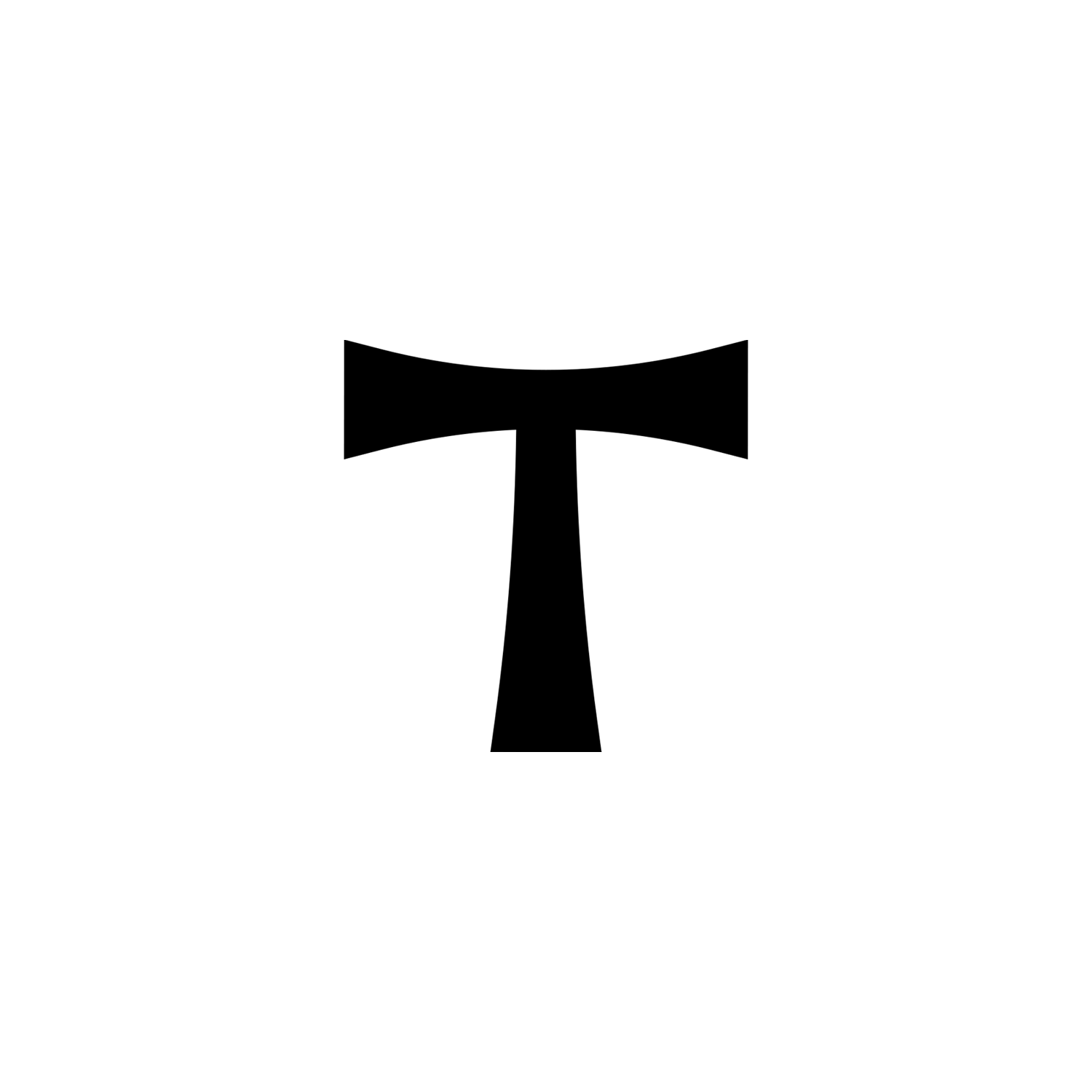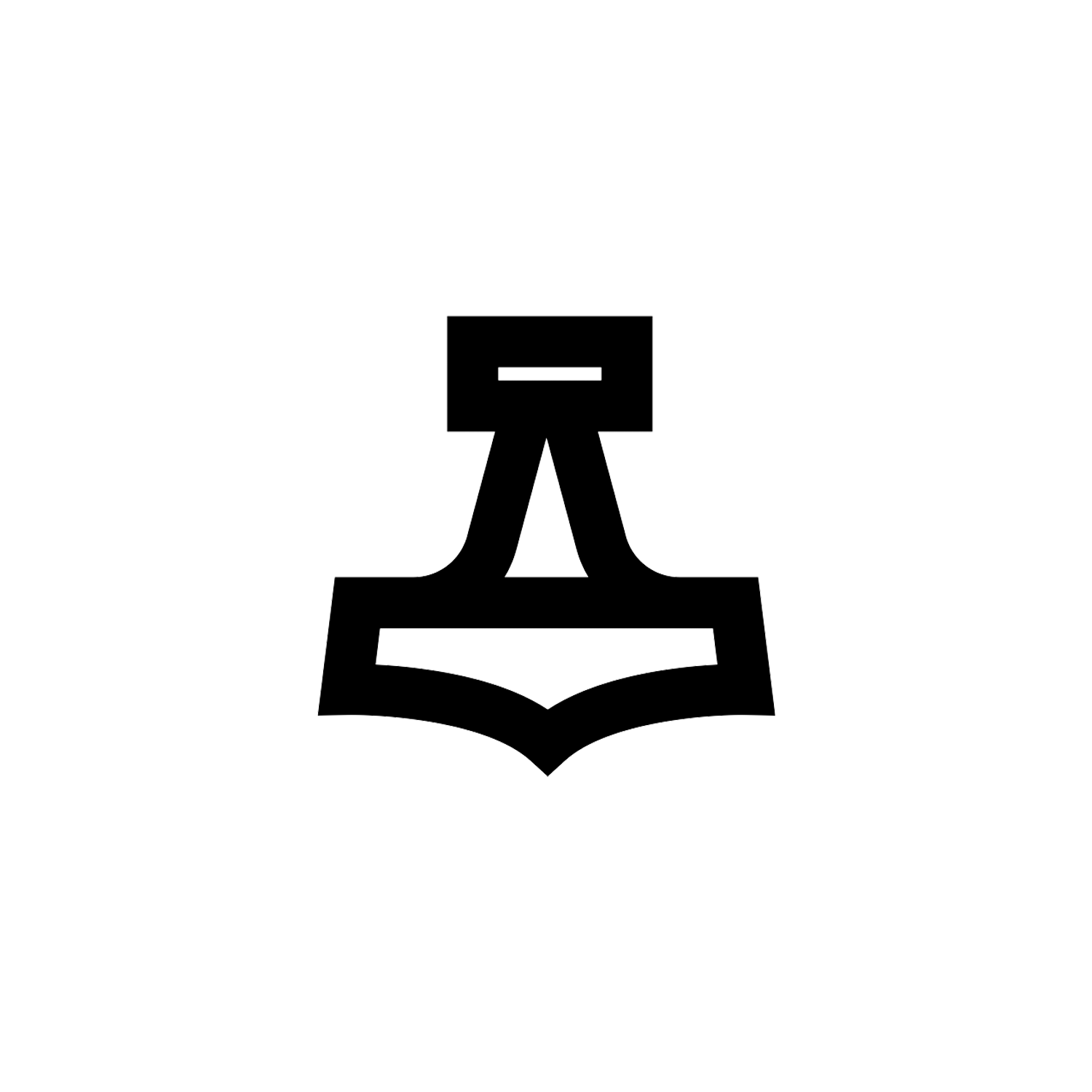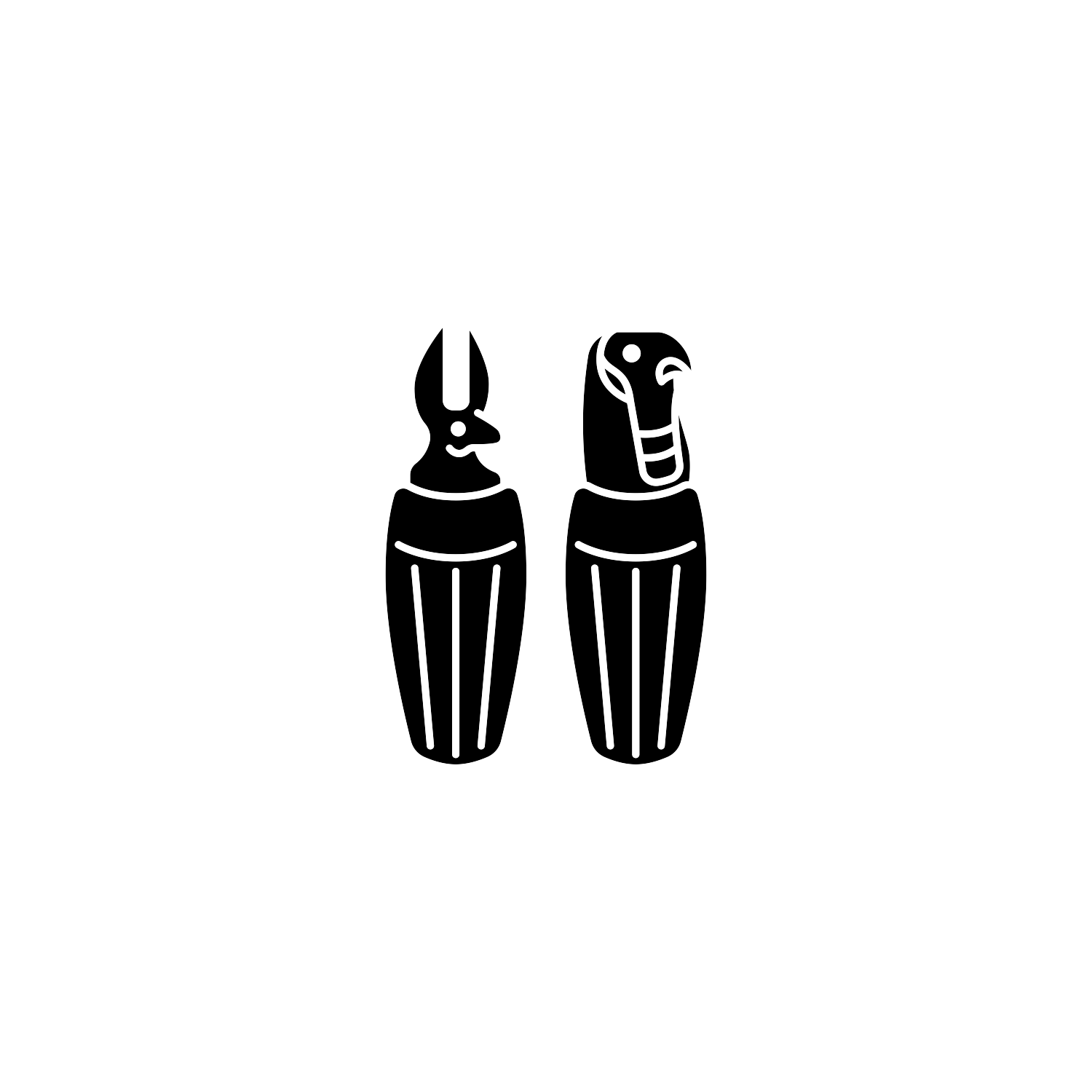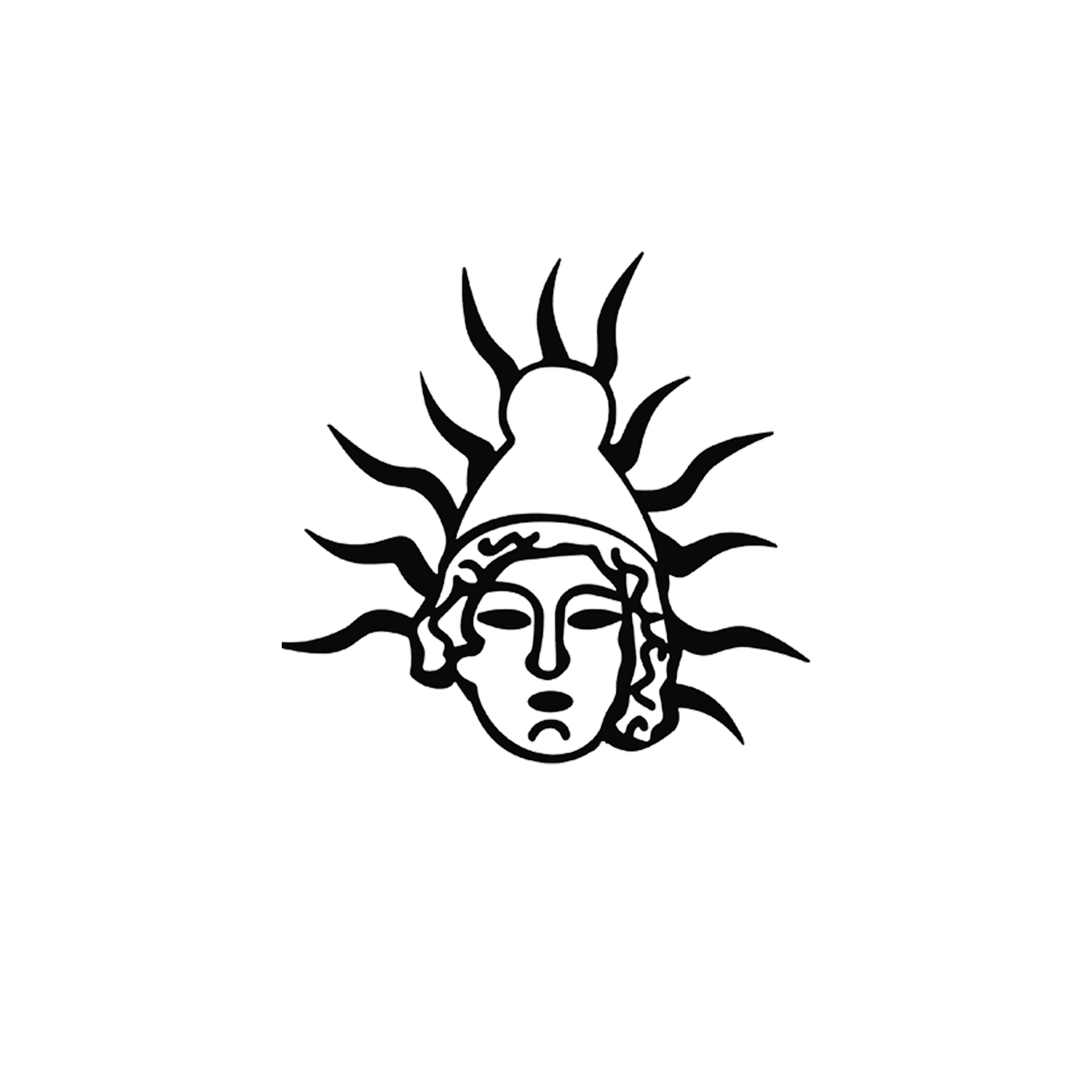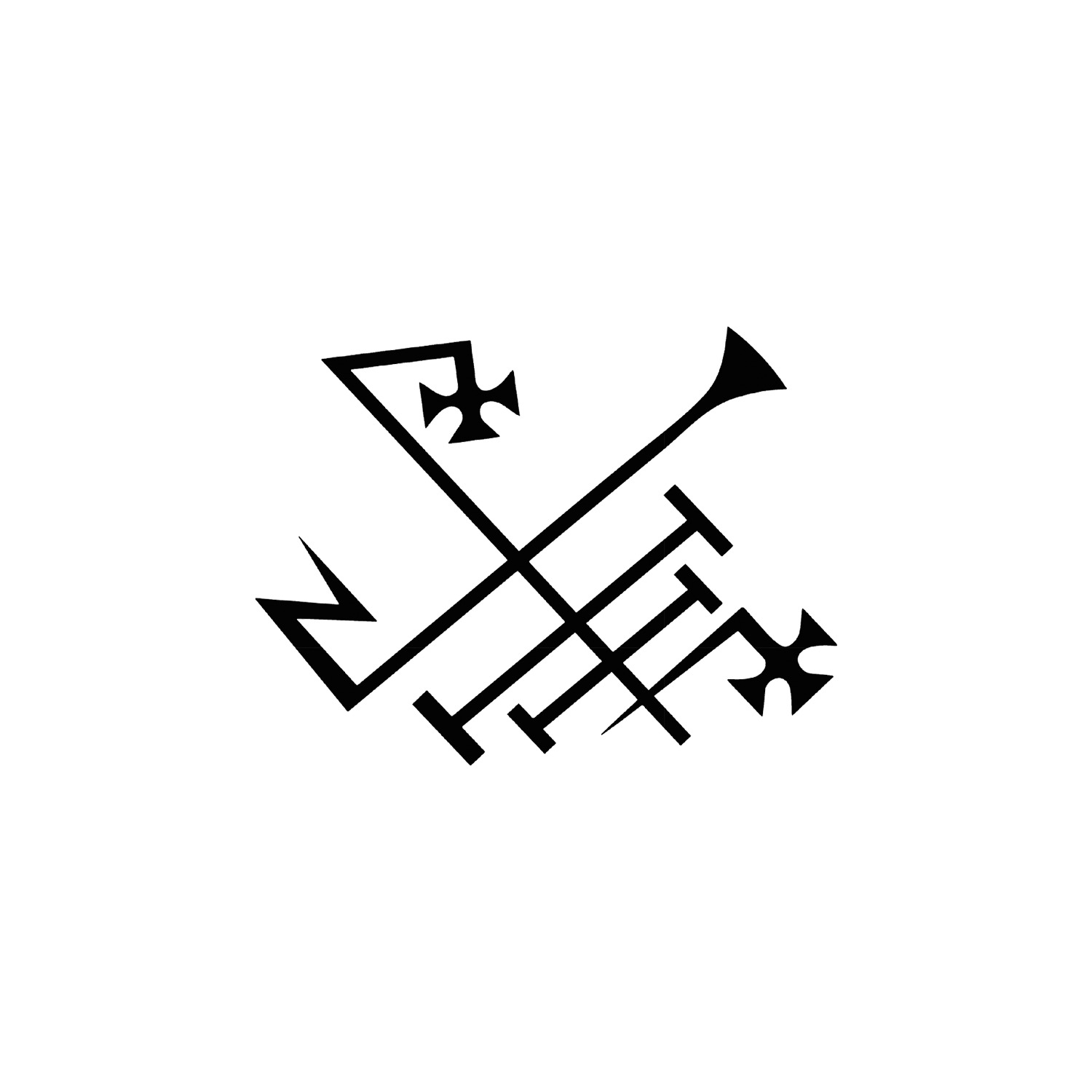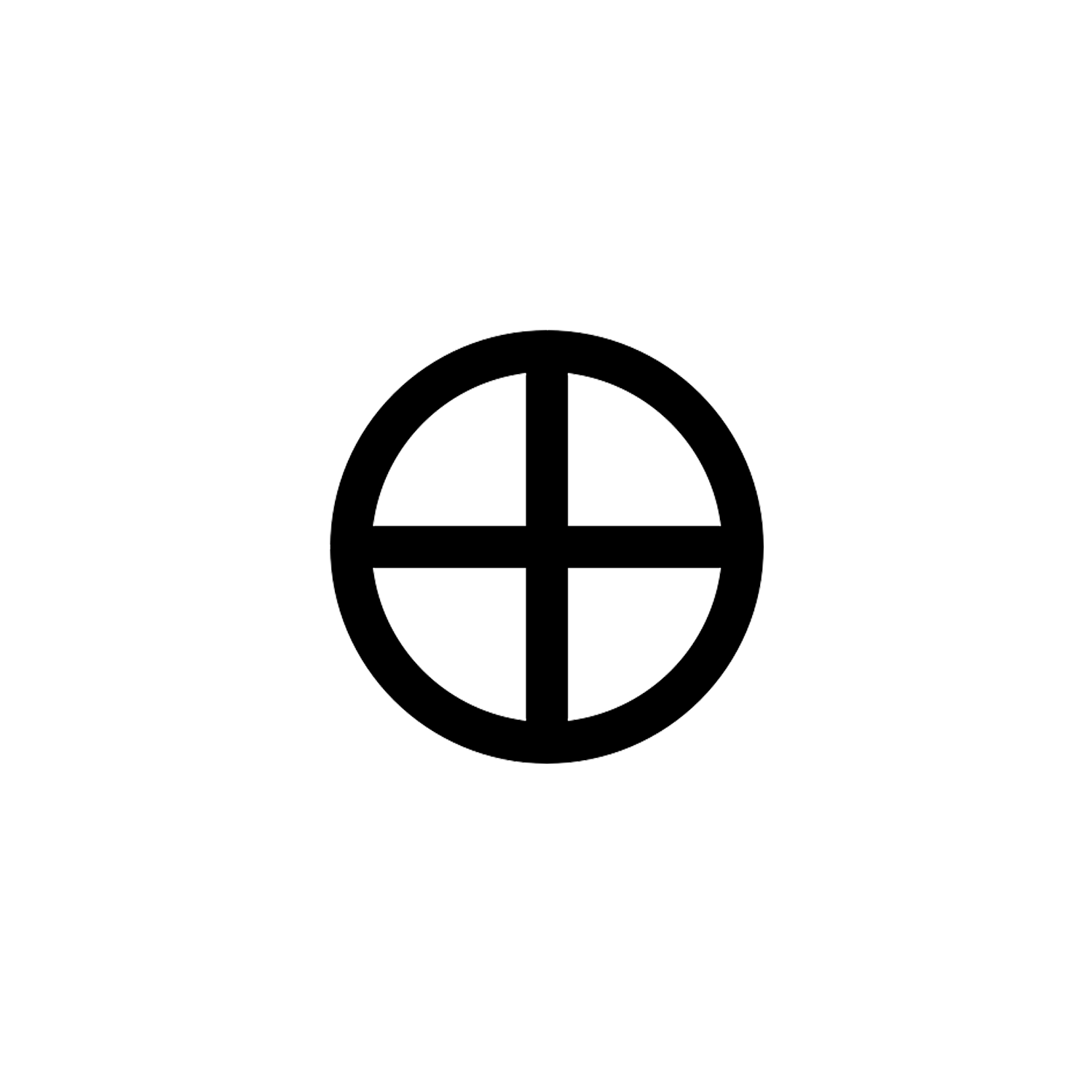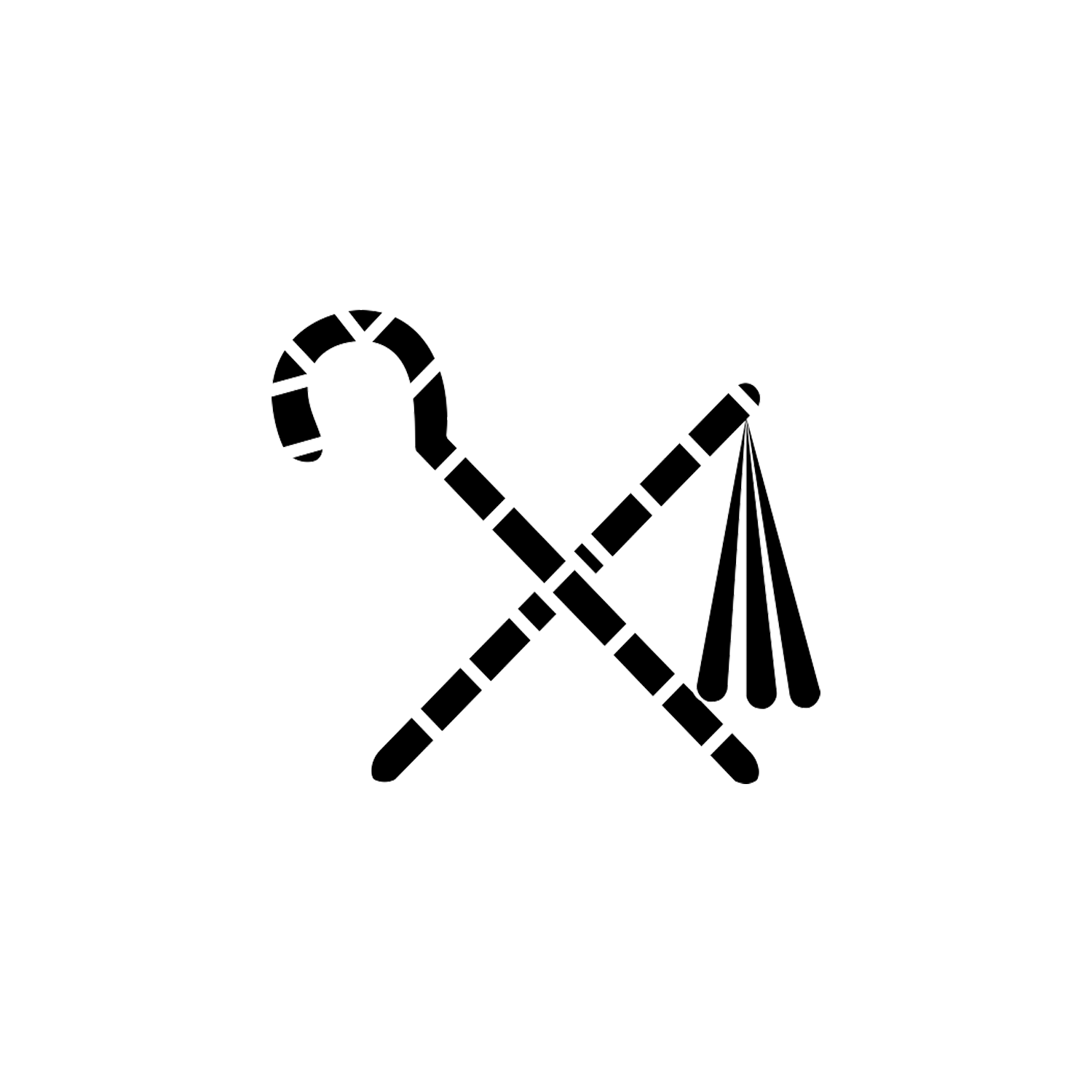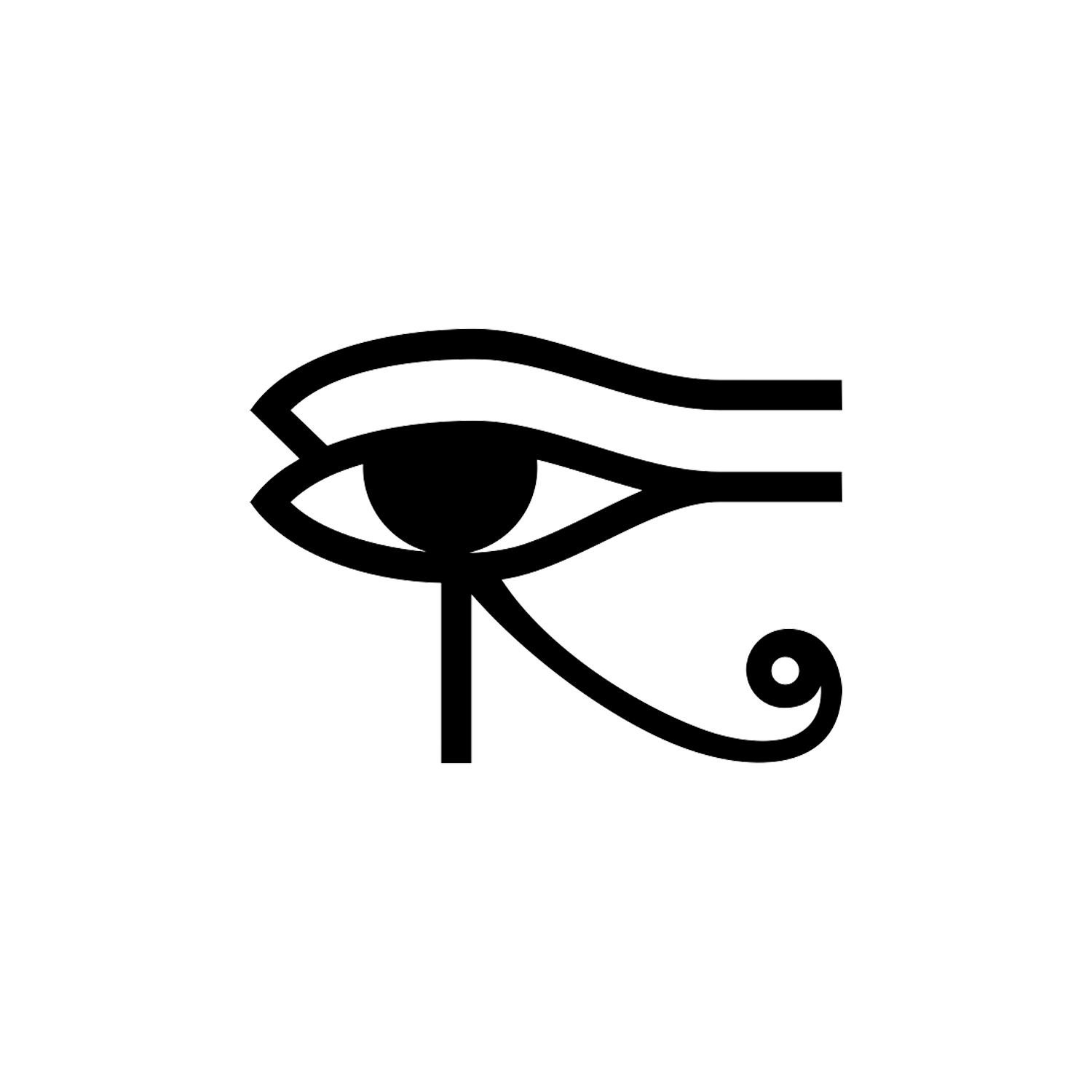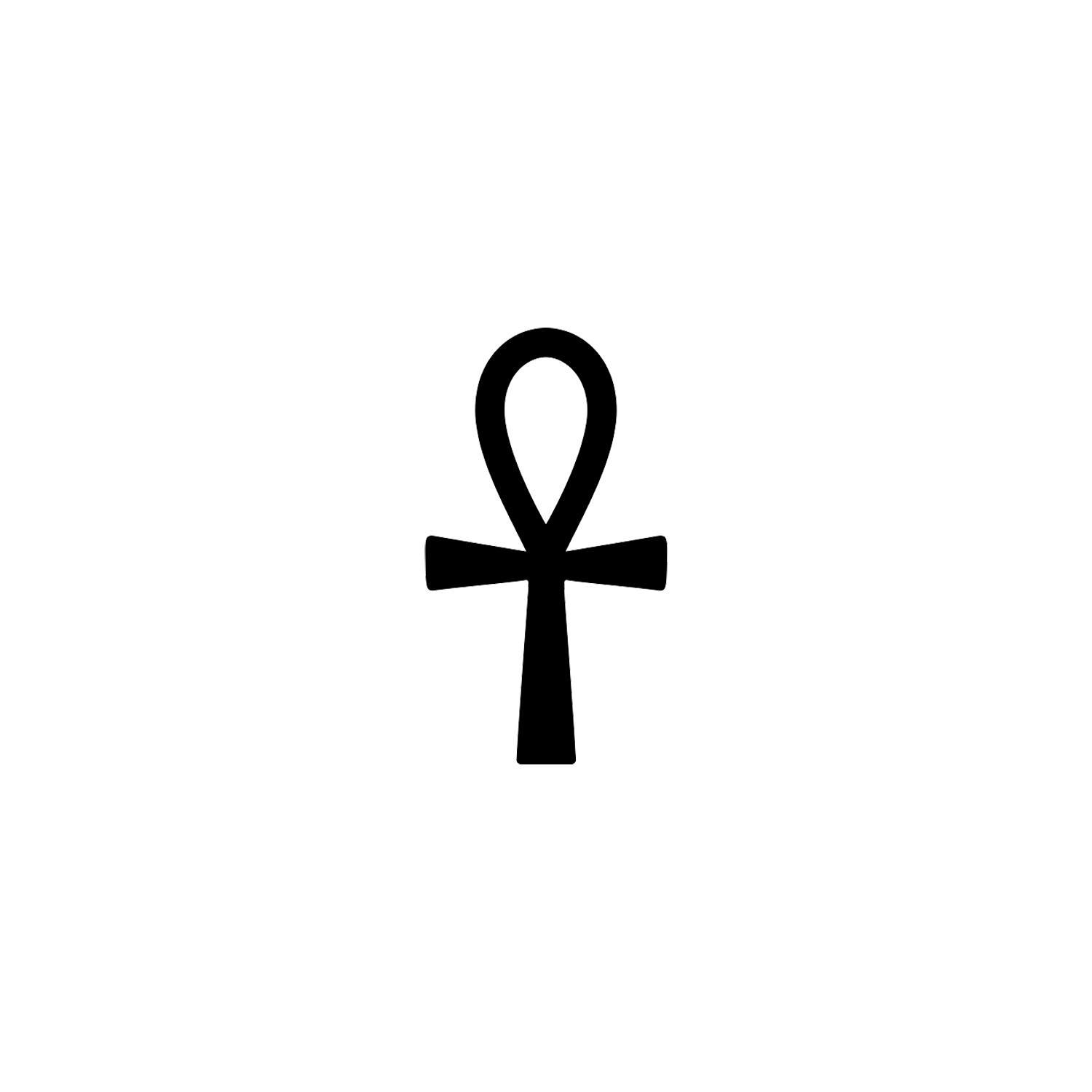Leviathan Cross
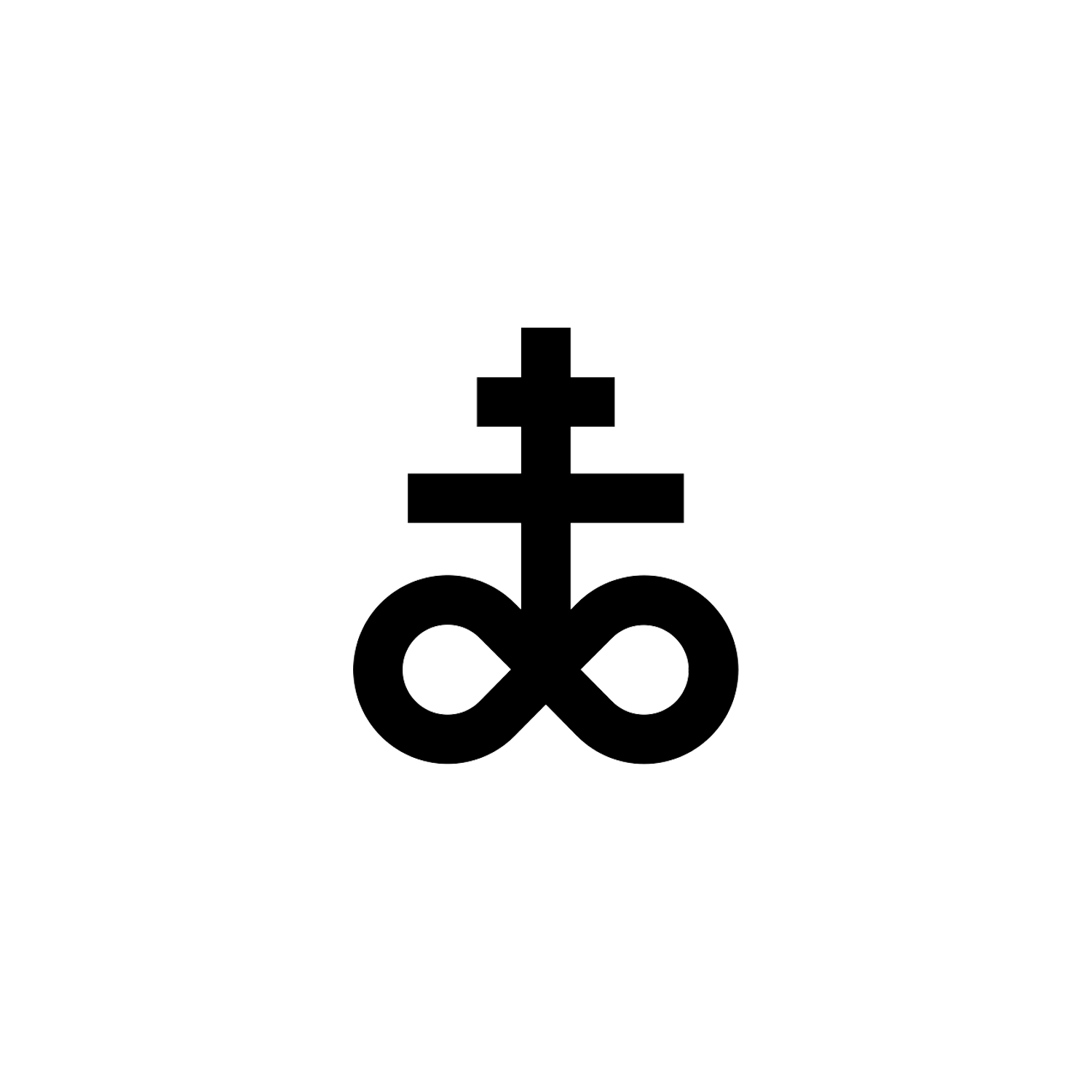

Leviathan Cross
Also known as Brimstone.
Overview
The brimstone symbol is sometimes referred to as the Leviathan Cross. At the bottom there is a lemniscate (the infinity sign, ∞), at the top there is a double cross (Cross of Lorraine). In most renditions, the horizontal bars are “graded” with the upper bar being the shorter, though variations with the bars of equal length are also seen.
The symbol has meanings in alchemy, the occult and religion.
Origin and Meaning
Being abundantly available in native form, sulfur was known in ancient times and is referred to in the Torah (Genesis). English translations of the Christian Bible commonly referred to burning sulfur as “brimstone”, giving rise to the term “fire-and-brimstone” sermons, in which listeners are reminded of the fate of eternal damnation that await the unbelieving and unrepentant. It is from this part of the Bible[1] that Hell is implied to “smell of sulfur” (likely due to its association with volcanic activity).

In alchemical traditions, this symbol has been used to represent sulfur, which is historically recognized as a fundamental element by alchemists. Sulfur, in alchemy, symbolizes the active, masculine principle, and is often associated with qualities like the sun, destruction, and fire.
In more modern contexts, particularly within certain strands of Satanism, the Leviathan Cross is sometimes referred to as the Satanic Cross and is used symbolically within those belief systems.
In contrast, Freemasonry uses a variety of other symbols, primarily the square and compasses, and does not include the Leviathan Cross among its emblems. Freemasonry’s symbols are largely focused on moral and ethical lessons, tool-based metaphors, and architectural symbolism, reflecting its historical roots in stonemasonry.
Sulfur and Alchemy
In alchemy, the Leviathan Cross represents the symbol for brimstone — an older/archaic name for sulfur, and that is considered one of the three main essential elements of nature.
Sulfur is also represented with another symbol in Alchemy, an upward pointing triangle on top of a cross, with either one or two cross sections similar to the Leviathan Cross.
Early European alchemists gave sulfur this unique symbol, a triangle atop a cross (🜍), which is sometimes confused with the astronomical crossed-spear symbol ⚴ for 2 Pallas. The variation known as brimstone use the symbol combining a two-barred cross atop a lemniscate (🜏).
Another association with the Leviathan Cross is found in the “Medicinisch- Chymisch- und Alchemistisches Oraculum” (a comprehensive listing of alchemical symbols from 1755) where a glyph with similarities to LaVey’s symbol which is the most commonly seen nowadays. The Sulphur Nigrum (Black Sulphur) could also be seen as an influence to the modern version.
Sulfur is associated with the human soul. It is believed that sulfur has masculine qualities — as it is hot, and dry. Mercury, however, is said to be feminine in nature — as it is cool, and moist. These two, when combined, are supposed to be considered the ‘parents of all metals’.
It represents properties such as dryness, heat, and masculinity. In alchemy, it could also represent evaporation, expansion, and dissolution. In terms of the tria prima, sulfur was seen as the middling element connecting salt (high) and mercury (low).
Alchemy drawings of Sulfur often portray it as the sun. In some versions, sulfur and salt are considered the ‘parents’ of Mercury.
It should also be noted that Satanists often use the sulfur symbol, because it is historically associated with the devil.

Fire and Brimstone
Fire and brimstone (Biblical Hebrew: גָּפְרִית וָאֵשׁ gofrīt wāʾēš, Ancient Greek: πῦρ καὶ θεῖον) is an idiomatic expression referring to God’s wrath found in both the Old and New Testaments. In the Bible, it often appears in reference to the fate of the unfaithful. Brimstone, an archaic term synonymous with sulfur,[2] evokes the acrid odor of sulfur dioxide given off by lightning strikes.[3] The association of sulfur with divine retribution is common in the Bible.
The idiomatic English translation of “fire and brimstone” is found in the Christian King James Version translation of the Old Testament and was also later used in the 1917 translation of the Jewish Publication Society. The 1857 Leeser translation of the Tanakh inconsistently uses both “sulfur” and “brimstone” to translate גָּפְרִ֣ית וָאֵ֑שׁ.
The translation used by the 1985 New JPS is “sulfurous fire” while the 1978 Christian New International Version translation uses “burning sulfur.”

Used as an adjective, fire-and-brimstone often refers to a style of Christian preaching that uses vivid descriptions of judgment and eternal damnation to encourage repentance especially popular during historical periods of Great Awakening.[4]
According to Strong’s Concordance, the term translated as “brimstone”, the Hebrew gofrīt, is the adjectival form of gōfer (גֹפֶר), which is used earlier in the Hebrew Bible to denote the wood which was used to build Noah’s Ark. In this view, the term would not denote sulfur, but instead, some sort of derivative of the wood or its tree, which was presumably flammable. Strong concludes that gofrīt must therefore refer to the plant’s resin, as resin’s flammable nature was both known and widely exploited during ancient times.[5]
The Septuagint translates the Hebrew term as theîon (θεῖον), a word which shares the root of the verb thumiáō (θυμιάω), which means “to burn, to smoke”. This unambiguously refers to sulfur, as Pliny the Elder writes that the substance was widely used as a fumigant, medicine, and bleaching agent.[6] Compounding this, the Targum Jonathan translates the Hebrew gofrīt as kīvrētāʾ (Aramaic: כִּבְרֵיתָא),[7] a term used several times in the Talmud for a substance which was used to bleach clothing.
Fire and brimstone frequently appear as agents of divine wrath throughout the Christian Book of Revelation culminating in chapters 19–21, wherein Satan and the ungodly are cast into a lake of fire burning with brimstone (Greek: λίμνην τοῦ πυρὸς τῆς καιομένης ἐν θείῳ, limnēn tou pyros tēs kaiomenēs en thei).[8] The fire appears in such passages is “eternal,” unlike the bodies or souls of people.
The Leviathan
The Leviathan (/lɪˈvaɪ.əθən/ liv-EYE-ə-thən; Hebrew: לִוְיָתָן, romanized: Līvyāṯān; Greek: Λεβιάθαν) is a sea serpent noted in theology and mythology. It is referenced in several books of the Hebrew Bible, including Psalms, the Book of Job, the Book of Isaiah, and the pseudepigraphical Book of Enoch. The Leviathan is often an embodiment of chaos, threatening to eat the damned when their lives are over. In the end, it is annihilated. Christian theologians identified Leviathan with the demon of the deadly sin envy. According to Ophite diagrams, the Leviathan encapsulates the space of the material world.

The Leviathan of the Book of Job is a reflection of the older Canaanite Lotan, a primeval monster defeated by the god Baal Hadad.[9][10] Parallels to the role of Mesopotamian Tiamat defeated by Marduk have long been drawn in comparative mythology, as have been wider comparisons to dragon and world serpent narratives such as Indra slaying Vrtra or Thor slaying Jörmungandr.[11]
Leviathan also figures in the Hebrew Bible as a metaphor for a powerful enemy, notably Babylon (Isaiah 27:1). Some 19th-century scholars pragmatically interpreted it as referring to large aquatic creatures, such as the crocodile.[12] The word later came to be used as a term for great whale and for sea monsters in general.
Leviathan can also be used as an image of the devil, endangering both God’s creatures—by attempting to eat them—and God’s creation—by threatening it with upheaval in the waters of Chaos.[13] A “Dragon” (Drakon), being the usual translation for the Leviathan in the Septuagint, appears in the Book of Revelation. Although the Old Testament nowhere identifies the Leviathan with the devil, the seven-headed dragon in the Book of Revelation is.[14] By this the battle between God and the primordial chaos monsters shifts to a battle between God and the devil.[15] Only once, in the Book of Job, the Leviathan is translated as Sea-Monster (ketos).[15]
The Church Father Origen accused a Gnostic sect of venerating the biblical serpent of the Garden of Eden. Therefore, he calls them Ophites, naming after the serpent they are supposed to worship.[16] In this belief system, the Leviathan appears as an Ouroboros, separating the divine realm from humanity by enveloping or permeating the material world.[17][16][18] It is unknown whether or not the Ophites actually identified the serpent of the Garden of Eden with the Leviathan.[16] However, since the Leviathan is basically connoted negatively in this Gnostic cosmology, if they identified him with the serpent of the Book of Genesis, he was probably indeed considered evil and just its advice was good.[19]

The word Leviathan has come to refer to any sea monster, and from the early 17th century has also been used to refer to overwhelmingly powerful people or things (comparable to Behemoth, also a biblical term).
LaVey and The Satanic Bible
Anton LaVey in The Satanic Bible (1969) has Leviathan representing the element of Water and the direction of west, listing it as one of the Four Crown Princes of Hell.
This association was inspired by the demonic hierarchy from The Book of the Sacred Magic of Abra-Melin the Mage. The Church of Satan uses the Hebrew letters at each of the points of the Sigil of Baphomet to represent Leviathan.
Starting from the lowest point of the pentagram, and reading counter-clockwise, the word reads “לויתן”: (Nun, Tav, Yod, Vav, Lamed) Hebrew for “Leviathan”.[20]
This glyph, created by Anton Lavey, is one of the emblems of the Church of Satan. It has no registered usage before the 1960’s and it is also difficult to see it outside that context.
The alchemical symbol for black sulfur—or the Leviathan Cross—appears in The Satanic Bible above the Nine Satanic Statements—a set of nine assertions made by LaVey in the introductory chapters of The Satanic Bible.

Conclusion
The symbol known as the Leviathan Cross, which consists of a double cross (similar to the Patriarchal cross) surmounted on an infinity symbol, has associations with alchemy and Satanism, but its interpretations and uses can vary.
There are unsubstantiated claims that the symbol originates from the Knights Templar, but no proof is presented. The association of a symbol with such background to the Church of Satan alone, which only usurped the symbol in the 1960s, is unfair and generalises its meaning.
Its use as the symbol for sulfur links it to the awe-inspiring, and terrifying, cataclysms of earthquakes and volcanic eruptions alludes to the ancients’ belief of an all-powerful God under whose eye they lived.
Most explanations of the symbol’s meaning are largely interpretative and subjective, with more background of its history we can judge its intention based on what context it is used in.
[1] "Sulfur in the Bible (14 instances)". bible.knowing-jesus.com.
[2] The dictionary definition of brimstone at Wiktionary
[3] Gerald Kutney, Sulfur: History, Technology, Applications & Industry. ChemTec Publishing, 2007. pp. 5
[4] Delahunty, Andrew; Dignen, Sheila (2010). Oxford dictionary of reference and allusion] (3rd ed.). Oxford, United Kingdom: Oxford University Press. p. 136. ISBN 978-0-19-956746-1.
[5] "Strong's H1614 - gāp̄rîṯ". Blue Letter Bible.
[6] Pliny the Elder on science and technology, John F. Healy, Oxford University Press, 1999, ISBN 0-19-814687-6, pp. 247–249.
[7] Targum Jonathan on Genesis 19:24
[8] intertextual.bible/text/isaiah-30.33-revelation-19.20
[9] Charles F. Pfeiffer "Lotan and Leviathan"
[10] Mark R. Sneed "The Israelite Reconfiguranion of the Canaanite Combat Myth: Leviathan" in: "Taming the beast : a reception history of Behemoth and Leviathan", De Gruyter, Berlin, 2022.
[11] Cirlot, Juan Eduardo (1971). A Dictionary of Symbols (2nd ed.). Dorset Press. p. 186.
[12] Gesenius, Wilhelm (1879). Hebrew and Chaldee lexicon to the Old Testament. Translated by Tregelles, Samuel Prideaux.
[13] Labriola, Albert C. (1982). "The Medieval View of History in Paradise Lost". In Mulryan, John (ed.). Milton and the Middle Ages. Bucknell University Press. p. 127. ISBN 978-0-8387-5036-0.
[14] Giblett, Rod (2019). Environmental Humanities and the Uncanny: Ecoculture, Literature and Religion. Vereinigtes Königreich: Taylor & Francis. p. 19.
[15] Wallace, Howard. "Leviathan and the Beast in Revelation." The Biblical Archaeologist 11, no. 3 (1948): 61-68. Accessed September 11, 2021. doi:10.2307/3209231.
[16] Tuomas Rasimus Paradise Reconsidered in Gnostic Mythmaking: Rethinking Sethianism in Light of the Ophite Evidence BRILL 2009 ISBN 9789047426707 p. 68
[17] Kurt Rudolph Gnosis: The Nature and History of Gnosticism A&C Black 2001 ISBN 9780567086402 p. 69
[18] April DeConick, Gregory Shaw, John D. Turner Practicing Gnosis: Ritual, Magic, Theurgy and Liturgy in Nag Hammadi, Manichaean and Other Ancient Literature. Essays in Honor of Birger A. Pearson BRILL 2013 ISBN 9789004248526 p. 48
[19] Tuomas Rasimus Paradise Reconsidered in Gnostic Mythmaking: Rethinking Sethianism in Light of the Ophite Evidence BRILL 2009 ISBN 9789047426707 p. 69
[20] "The History of the Origin of the Sigil of Baphomet and its Use in the Church of Satan". Church of Satan website.
Latest Symbols
Monthly Digest
A summary of symbols for the month in a quick read format straight to your inbox.


